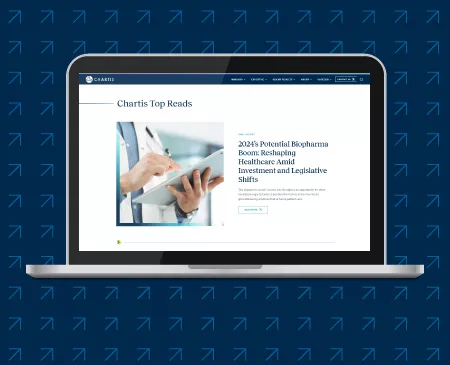New Developments
COVID Community Levels and Vaccines
- President Biden has recently ended his COVID isolation period after testing negative for a second consecutive day on Sunday. Biden first tested positive on July 21st and then again on July 30th with a rebound infection following Paxlovid treatment. Even with concerns about rebound infections following Paxlovid treatment, health officials indicate that the treatment prevents severe outcomes. Prescribing levels topped 1 million in July, a 37% increase from June.
- According to the Centers for Disease Control and Prevention (CDC), COVID-19 cases in the US are down slightly from last week, with a 7-day moving average of 117,000 new cases daily. However, 42% of US counties remain at high COVID community levels, and 39% have medium levels based on a 7-day average as of August 3rd, 2022. Overall, over 96% of states, the District of Columbia, and US territories had at least one high- or medium-level county this week.
- The Omicron subvariants BA.4, BA.4.6, and BA.5 now represent over 98% of new COVID-19 cases in the US, up from 71% at the beginning of July and just 1% in early May. To target virus strains causing COVID-19, Pfizer and Moderna are working on bivalent coronavirus boosters (vaccines including the older formula and updates that target the Omicron BA.4 and BA.5 subvariants). Reports indicate that these new boosters should be available in September. The U.S. Department of Health and Human Services (HHS) has secured a deal for 66 million doses of the Moderna bivalent booster and 105 million bivalent booster doses from Pfizer and BioNTech. These doses will not be enough for the entire US population, and additional funding from Congress must be secured to pick up more doses.
- In June, the Food and Drug Administration authorized emergency use of the COVID-19 vaccines for children ages six months to five years, and the CDC recommended that this population should receive a COVID-19 vaccine. As of August 3, 2022, 775,725 children under the age of five had received the COVID-19 dose, just 3.8% of the 19 million children in this age group. Vaccinations peaked among this age group 2 weeks into eligibility, significantly below the 5 to 11 age group. The Kaiser Family Foundation identified several issues that will likely continue to limit pediatric vaccinations, including jurisdictional decisions, fewer vaccine locations, dependence on pediatricians, and other access barriers that disproportionately impact low-income and minority families and children.
Monkeypox
- The CDC has reported 6,616 monkeypox cases as of August 3rd. Last week, the US declared monkeypox a public health emergency. This declaration should enable the government to allocate more resources to the monkeypox response and increase access to care. The response has thus far focused on vaccinating high-risk populations. In addition, antivirals, such as tecovirimat (TPOXX), may be recommended to treat people who are more likely to get severely ill.
- Public health experts warn that the US must continue to learn from lessons during the COVID-19 pandemic to best respond to monkeypox moving forward. One difference with monkeypox is that an effective vaccine is already available, but experts indicate the opportunity to contain the current outbreak must be supported by robust testing, disease surveillance, contact tracing, and effective vaccine administration. There have already been delays in receiving test results that have hampered contact tracing efforts, and monkeypox data collection continues to be challenging. So far, access to vaccines and treatments have been limited. Federal response over the next several weeks will likely be closely monitored and will be critical to limiting the spread of monkeypox.
- To date, monkeypox in the US has disproportionately affected gay and bisexual men. One learning from the COVID-19 pandemic highlighted the importance of tailoring public health messages to each community. The CDC has focused on collaborating with community experts to directly reach gay and bisexual men across racial, ethnic, socioeconomic, and geographic backgrounds as well as reduce stigma in monkeypox communication and engagement.
Related Links
NPR
President Biden tests negative for COVID
Kaiser Family Foundation
COVID-19 Vaccination Rates Among Children Under 5 Have Peaked and Are Decreasing Just Weeks Into Their Eligibility
Fierce Pharma
U.S. Locks up 66M Retooled COVID Shots from Moderna
Editorial advisor: Roger Ray, MD, Chief Physician Executive.







